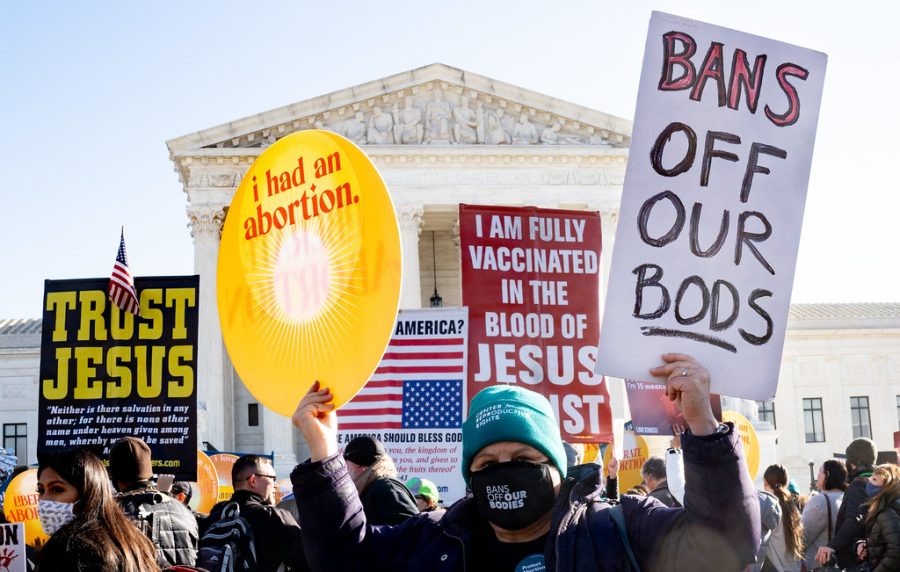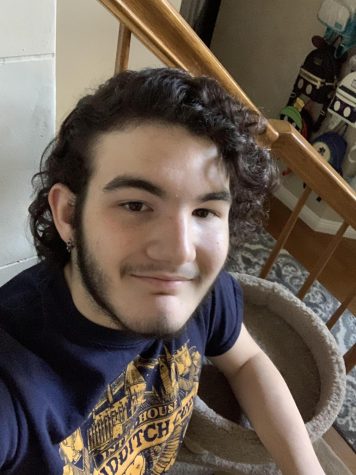Life in a Post-Roe U.S.
Protesters outside Supreme Court during Dobbs case.
January 26, 2023
Due to the now infamous 5-4 ruling in Dobbs v. Jackson Women’s Health Organization, the Supreme Court has held that the Constitution does not protect a person’s right to choose to have an abortion, overturning the Supreme Court ruling on Roe v. Wade 50 years prior. Justices Samuel Alito, Clarence Thomas, Neil Gorsuch, Brett Kavanaugh, and Amy Coney Barrett made up the majority opinion, with Chief Justice John Roberts Jr. filing a concurring opinion stating that he would not have overturned Roe. Justices Elena Kagan, Sonia Sotomayor, and Stephen Breyer filed their dissenting opinion, maintaining that “in this Nation, we do not believe that a government controlling all private choices is compatible with a free people.”
As of January 6th, 2023, the following states have enacted total bans on abortions following the Dobbs decision: Alabama, Arkansas, Idaho, Kentucky, Louisiana, Mississippi, Missouri, Oklahoma, South Dakota, Tennessee, Texas, West Virginia, and Wisconsin. Out of those thirteen states, only Idaho, West Virginia, and Mississippi have made exceptions for cases of rape, with Idaho and West Virginia also allowing abortions in cases of incest.
Furthermore, Georgia has enacted a ban on abortions after six weeks of pregnancy, despite studies showing women tend to only recognize that they are pregnant between five and seven weeks. Arizona and Florida have limited abortions to within 15 weeks of conception, Utah has banned abortions after 18 weeks, and North Carolina has instituted a ban past 20 weeks. Indiana, Iowa, North Dakota, and Ohio have attempted to ban abortions past 22 weeks, but their bans have so far been blocked by judges. Montana and Wyoming, which have attempted to ban abortions once a fetus is viable, have had similar luck in instituting their bans.
For those living in the aforementioned 24 states, finding a physician who can perform an abortion is difficult if not impossible. As is commonplace amongst recent federal decisions, the damage caused by the Dobbs decision is felt especially by people of color and people in low-income communities. These people, who may have struggled to get an abortion even without the recent bans, simply do not have the resources to pay for abortions as early as some bans mandate, or otherwise travel to other states where abortions remain legal.
Most importantly, these bans on abortions have and will continue to result in more damage to public health and more deaths among youth across the country. Many have been turned away during miscarriages, ectopic pregnancies, and other health crises by medical staff who were unable to perform abortions due to their states’ bans. Giving birth in a hospital can also put more financial strain on low-income families, and those who choose to give birth without medical attention are significantly more likely to face complications in delivery. Studies have shown that the rates of maternal death in states which have banned abortions are as much as 62% higher than in states where abortion remains legal.
These bans have caused panic across the country, leaving people wondering if their state will be next to pass new legislation or if they will continue to have access to the medical care they need. In their dissenting opinion, Justices Kagan, Sotomayor, and Breyer predicted exactly what has come to pass; the American public has come to believe that “its constitutional protections hung by a thread—that a new majority, adhering to a new ‘doctrinal school,’ could ‘by dint of numbers’ alone expunge their rights.” To many, it is a disturbing thought that the rights they held as sacred and protected that have been fought for throughout American history can be so quickly and decisively overturned.



